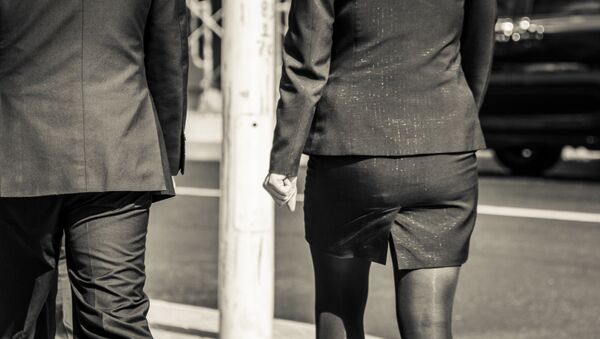About half a million Swedes believe that they have been subjected to sexual harassment in the workplace, according to the Job Health Index's annual survey.
Surprisingly, men and women turned out to be almost equally exposed to sexual harassment, the key factor is what gender dominates the workplace. For example, men who work at a women-dominated workplace are more vulnerable than the men who work in a male-dominated profession, or at a workplace with a more even gender distribution.
About 15 percent of men in women-dominated milieus have admitted to being exposed to harassment, compared to 17 percent of women in predominantly male workplaces.
With all types of harassment, the difference between the sexes expands somewhat: 26 percent of young women have claimed harassment, compared with 21 percent of young men. As age increases, the percentages tend to fall.
This year, the Job Health Index asked participants in the survey three questions: whether they have been subjected to sexual harassment, whether they have experienced other types of harassment, and whether they have seen others harassed. Until 2017, the questions used to be embedded in one. By splitting the questions, the researchers expected to uncover a stronger gender imbalance, but this was clearly not the case.
“This is surprising, especially with all the debate and the focus on this matter in recent years”, Job Health Index director Lars Hjalmarsson, explained to the daily newspaper Dagens Nyheter, referring to the anti-harassment #MeToo movement, which gained strong momentum and nationwide media coverage in Sweden.
Hjalmarsson suggested that the differences may stem from social norms that govern sexual behaviour. Women are believed to see social relationships as more important than men do. Hjalmarsson also suggested that women are more alert when it comes to criticism from managers or colleagues.
“Despite getting identical criticism, people may perceive it differently due to gender and social norms”, he argued.
Healthcare professionals turned out to be the most exposed to harassment. One-fourth of healthcare employees said they have been exposed. According to the Job Health Index, harassment may come from patients and customers, as well as fellow employees or managers.
On the whole, managers turned out to be even more vulnerable to harassment and bullying than ordinary employees, the difference being largest in the public sector, where 14 percent of managers believe they have suffered harassment or bullying, compared with 9 percent of employees.
Hjalmarsson attributed this to unclear and sprawling political leadership. Subordinate managers, he ventured, are under pressure from two directions, both from the higher ups and their juniors, while trying to interpret what the politicians and the people want.
“In the private sector, it is clearer what rules apply, the company must survive. But in education and social services, this becomes more sprawling, and harassment grows”, Hjalmarsson explained.
Sweden takes pride in striving for gender equality; its current government identifies as “feminist”. In 2017, Sweden was totally engulfed by the #MeToo movement, which spurred over a dozen petitions by representatives of various trades from church officials to sex workers, hours of media debates, countless opinion pieces and numerous outings of alleged sexual predators.


